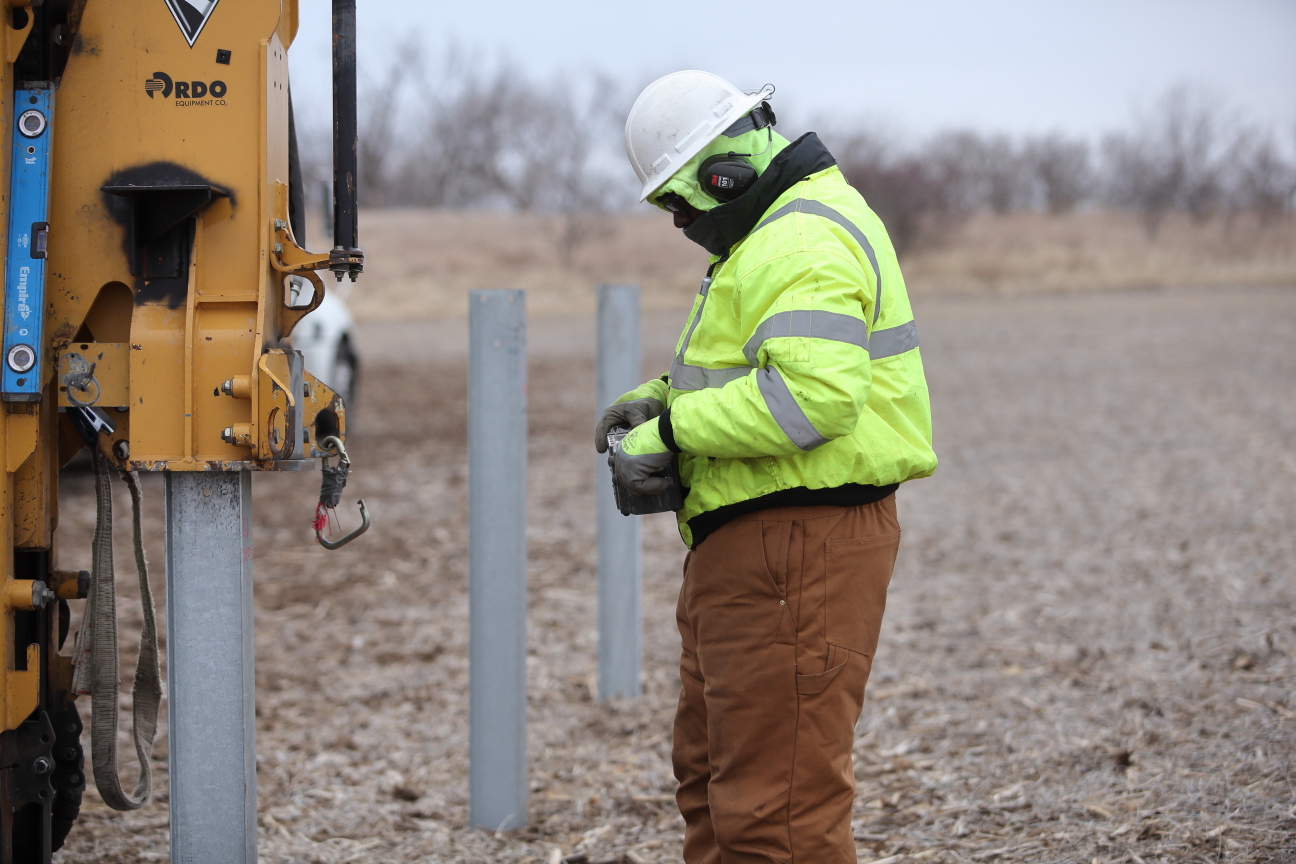
The Project
Badger State Solar is a proposed 149-megawatt (MW) solar photovoltaic generation facility located on privately-owned land in Jefferson County, Wisconsin. The project will provide clean, locally-generated electric power to an area utility while providing significant environmental and economic benefits in the local community.
Badger State Solar will utilize about 1,200 acres of land as shown in the map above, west of the City of Jefferson, in the Towns of Jefferson and Oakland. The land is offered by landowners interested in participating in the project. The project will feature rows of solar panels that track the sun throughout the day, with 16 to 20 feet between each row. In all, panels and equipment will cover only about 30 percent of the project area with the most of the balance hosting vegetative cover.
The growth of farm-based solar generation in Wisconsin is not likely to have a meaningful impact on the total amount of agricultural land available in the County or in the State. The Project represents less than 0.5% of the active farmland in Jefferson County. In fact, Wisconsin could produce approximately 50% of the electric energy consumed annually in the state through the use of solar panels on well under 2% of its total harvested cropland.*
(*See the U.S. Energy Information Administration and U.S. Department of Agriculture websites for the Wisconsin state 2017 total electric energy use here and the total harvested cropland here.)
The project proposes to use a simple design that minimizes soil disturbance, with solar panels mounted on racks attached to steel posts driven into the ground. Rows of panels will be arranged along a north-south axis, and the panels will rotate from east to west throughout the day to efficiently capture the sun’s energy.
Buried wires connecting the rows of panels will lead first to inverters that convert direct current to alternating current and then from inverters to a step-up transformer, where the voltage will be increased to transmission system levels for connection to an existing transmission substation. As shown in the map above, the substation is located near the intersection of Wisconsin Highway 89 and County Road Q.
Environmental Benefits
The project will feature grass and seed mixes below panels and within the site that will help build soil nutrients and reduce fertilizer, herbicide and pesticide use. The facility will create pollinator habitat as well as possible opportunities for grazing.
Reduced stormwater runoff and soil erosion from the land hosting solar panels can improve downstream water quality.
In addition, compared to other sources of Wisconsin’s average generation mix, the project will avoid significant emissions annually*:
- Reduction of 195,186 lbs of NOX
- Reduction of 146,172 lbs of SO2
- Reduction of 20,882 lbs of CH4
- Reduction of 5,800 lbs of N2O
- Reduction of 405 million lbs of CO2
(Avoided emissions information comes from the Environmental Protection Agency's "Emissions & Generation Resource Integrated Database.)"
Badger State Solar is designed to generate clean power for Wisconsin for 25 to 40 years.
At the end of project life, facilities will be removed, and the land will be restored for agricultural use.

Community & Economic Benefits
Leased land payments will provide income diversification for local farmers while protecting and preserving agricultural land for future generations.
The project will be a significant source of new local tax revenue with over $550,000 expected in annual shared revenue, as compared to the $20,000 in property taxes assessed in 2017 from the land leased for Badger State Solar.
Hundreds of jobs will be created during construction; once operational, the project will directly employ a staff of four and will spur the creation of an additional eight or so jobs statewide.
Over $2.6 million in new local earnings during construction for Jefferson County
Over $446,000 in new local long-term earnings for Jefferson County annually once project is operational.
Dr. David G. Loomis, Professor of Economics at Illinois State University and co-founder of the Center for Renewable Energy, completed an independent third-party economic impact analysis of the project for Badger State Solar and the figures above are taken from that analysis.
Badger State panel rows will be generously spaced
To minimize shadows on adjacent rows and to allow for periodic maintenance, the centers of rows will be spaced about 16-20 feet apart, leaving wide gaps between, even when panels are flat at midday. With this spacing, solar panels and equipment will cover only about 30 percent of the project site.
Panels will be about as tall as full-grown corn
Panels will be tallest at sunrise and sunset, when they will be turned toward the sun, stopping at 30 degrees from vertical, which avoids glare for neighbors. When the sun is higher than 30 degrees above the horizon, the panels will track the sun across the sky, rotating to flat at midday and then returning to their tallest profile as sunset approaches.
Why Solar?
Our sun’s energy is predictable, unlimited, and free.
Solar power is a clean energy source with no emissions.
Solar systems produce power during the day when demand is high.
Construction of new large-scale solar facilities can create hundreds of jobs.
State governments, businesses, and utilities can use solar to meet their renewable energy policy targets.
Solar projects generate tax revenues for communities which can be used to invest in new roads, bridges, schools or to offset existing tax rates.
The levelized cost of energy from utility-scale solar has declined by 88% since 2009* and has reached cost parity with traditional forms of generation in many regions.
Solar development is temporary and helps to preserve land for
future generations.
*Additional information about the dramatic decline in the cost of solar energy is available from leading financial advisory and asset management firm Lazard at www.lazard.com/perspective/levelized-cost-of-energy-and-levelized-cost-of-storage-2018.


















